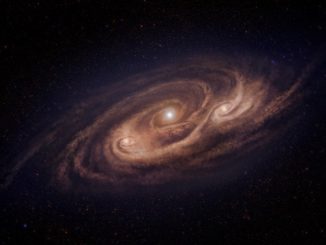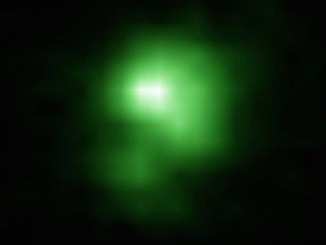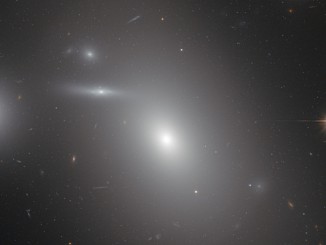What’s small, irregularly shaped and recently underwent a spurt of star formation? The dwarf galaxy NGC 1705, an oddball starburst galaxy about 17 million light years from Earth. Such irregular dwarf galaxies tend to contain little raw material beyond hydrogen and helium and are thought to be similar to the first galaxies forming in the wake of the Big Bang. This Hubble Space Telescope image was collected in a project to better understand the interplay between stars, clusters and ionised gas in nearby star-forming galaxies. Looking at NGC 1705 in H-alpha light using Hubble’s Wide Field Camera 3, researchers were able to discern thousands of emission nebulae caused by ultraviolet light from hot, young stars making surrounding gas clouds glow. Hubble studied NGC 1705 in 1999 using an older camera, but the Wide Field Camera 3 provides a much more detailed view.




